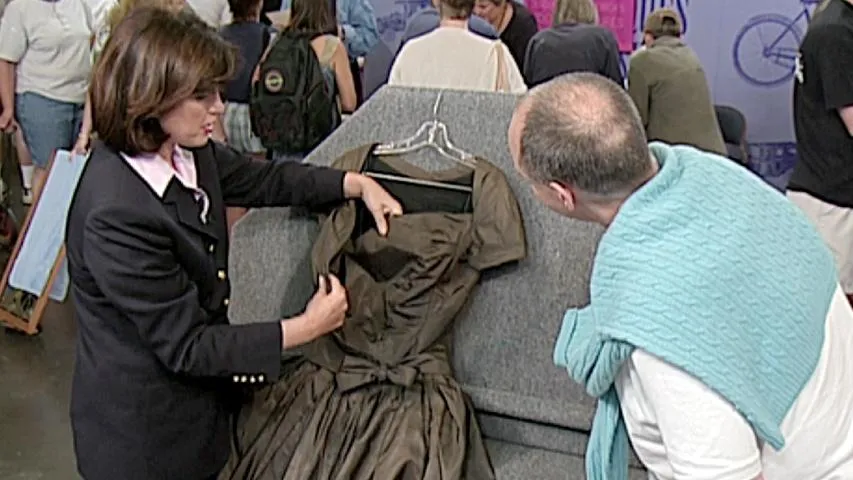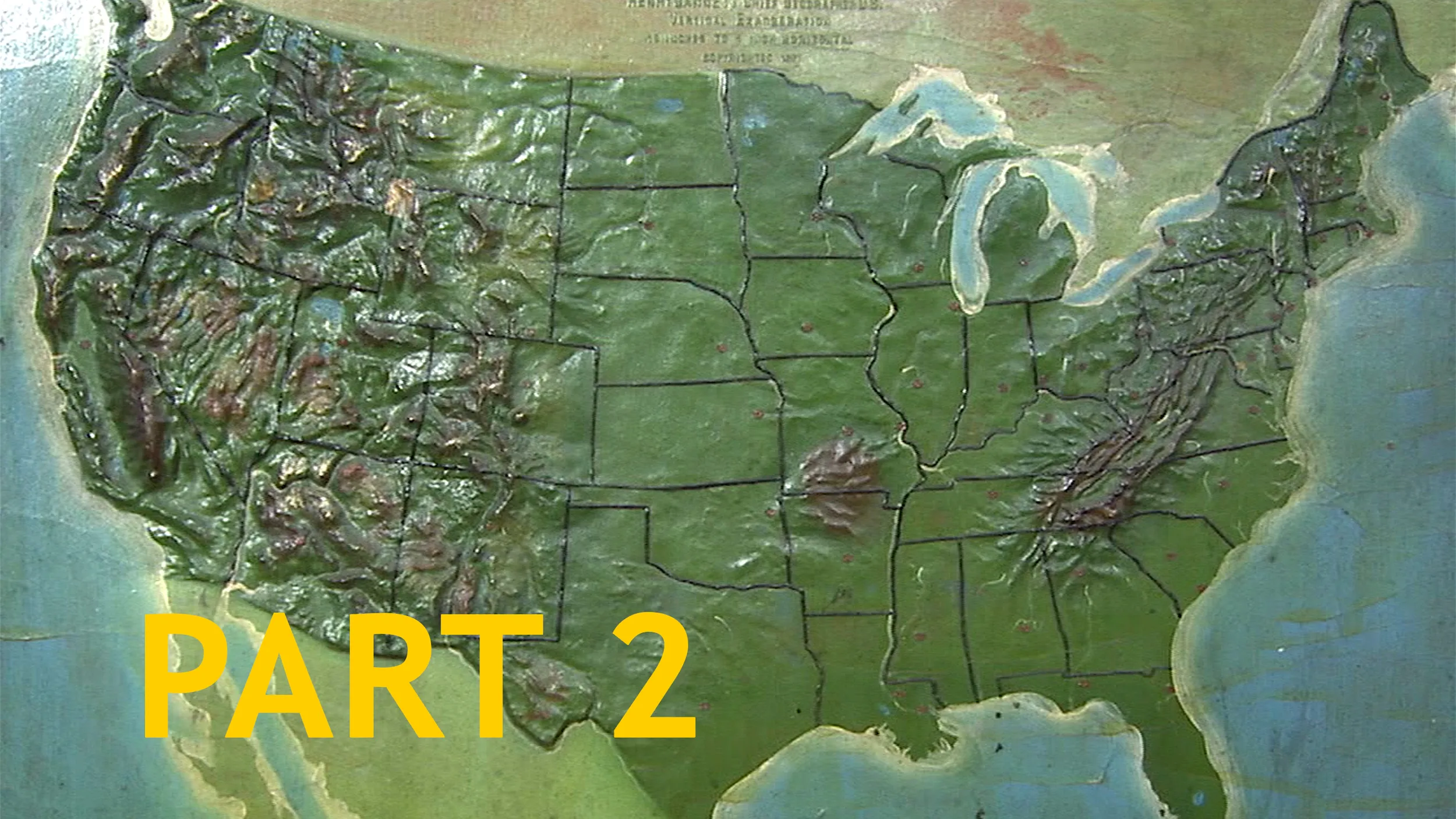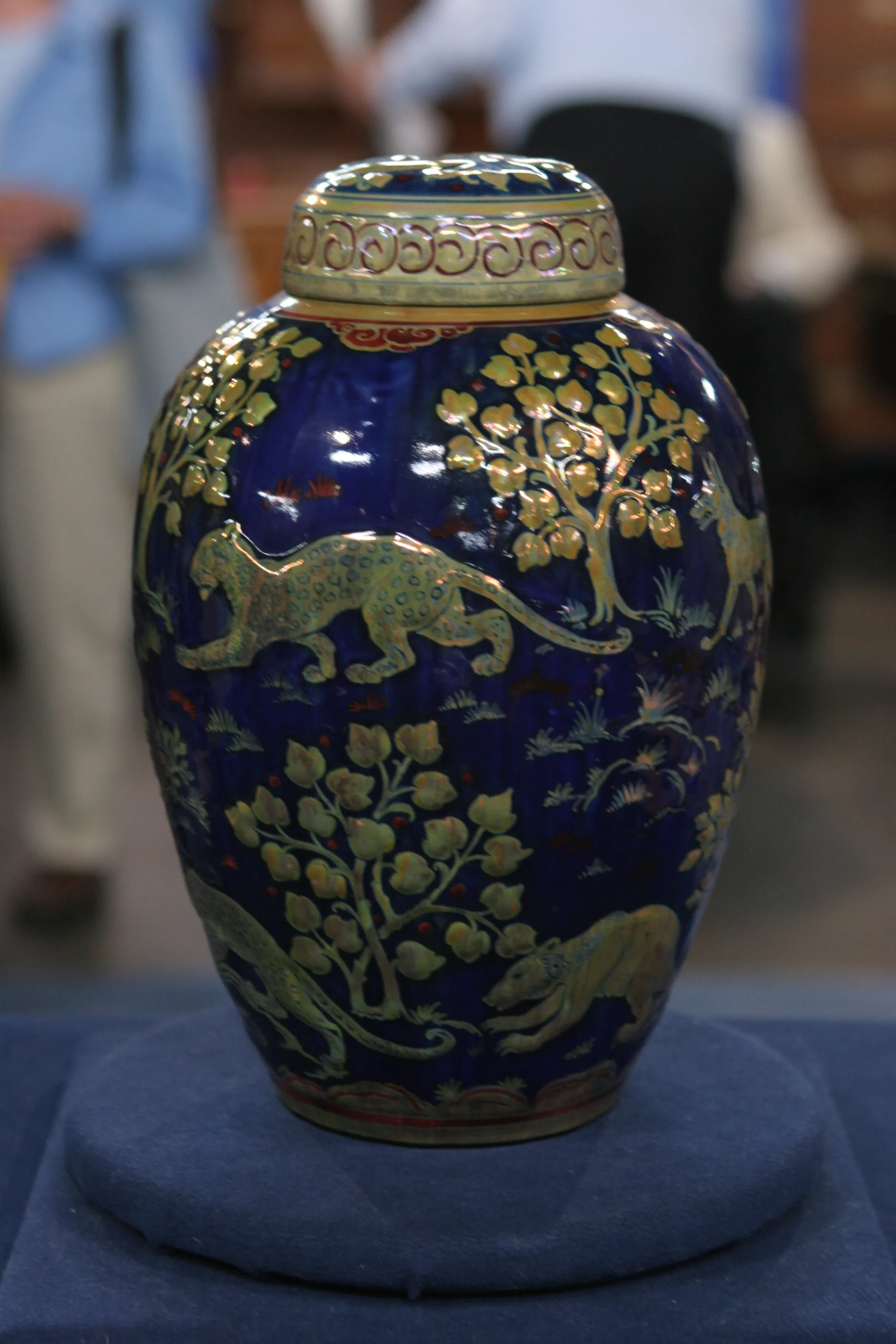GUEST: Well, my grandfather was a promotor of mines throughout California in the mother lode. We believe that this was his print. We've had it in the family as long as I can remember, and it's resided at our summer cabin at Taos for about 40 years.
APPRAISER: Did he make a fortune from this?
GUEST: Unfortunately not. There were times when mother remembers taking gold bricks down to San Francisco, but those were few and far between.
APPRAISER: Well, when I come mto ANTIQUES ROADSHOW cities, I think about, what would I like to see walk in? And one of the things I thought when I came west to Sacramento was an American print from out West. Because the lithography in the 19th century was something that was in every mAmerican city. They did advertisements, tickets, and things like that. And then they did some separately issued prints as illustrations. But those are very, very rare, and I was hoping one came in. And we... that's what we have here. We have a print that was done in Gold Hill, Nevada, and it was from 1876. It was drawn by T.L. Dawes, and it was copyrighted 1877, so it's right in that period, which is very unusual, because not many were done, and most of them would have been destroyed. What's really exciting about this is that it's of mining in Nevada right at the period. The Comstock Lode, which is one of the greatest repositories, in fact the greatest in America of silver, was discovered in 1859 by Comstock. He sold his rights to it for $11,000, and it became a huge, huge lode. Many of the fortunes in California came from the silver in this mine. This was done by Dawes, who was there at the time, at the end. It was mined for about 20 years. So this was near the end, when it was fully developed. And it shows incredible detail. And what's really wonderful about this is this was drawn by somebody on the spot. It's not somebody later saying this is what it looked like.
GUEST: Yes.
APPRAISER: Now, prints like this, any American print is very rare from the West Coast in this area. In fact, these people are not listed in any of the documentation. There's no listing of them. But especially when you have a historical connection with a great American event like this, I would say if I had this in my shop I would sell it for probably between $6,000 to $8,000.
GUEST: Oh, Chris!
APPRAISER: Yeah, absolutely. And it's even possible at an auction, if you had the right people looking for it... because it's unrecorded, the people are not known, it could even go for as much as $11,000, which is what Comstock sold his initial stake for.
GUEST: Oh, my goodness.
APPRAISER: Yeah, it was so much fun to see.
GUEST: Well, it's a pleasure to bring it.









